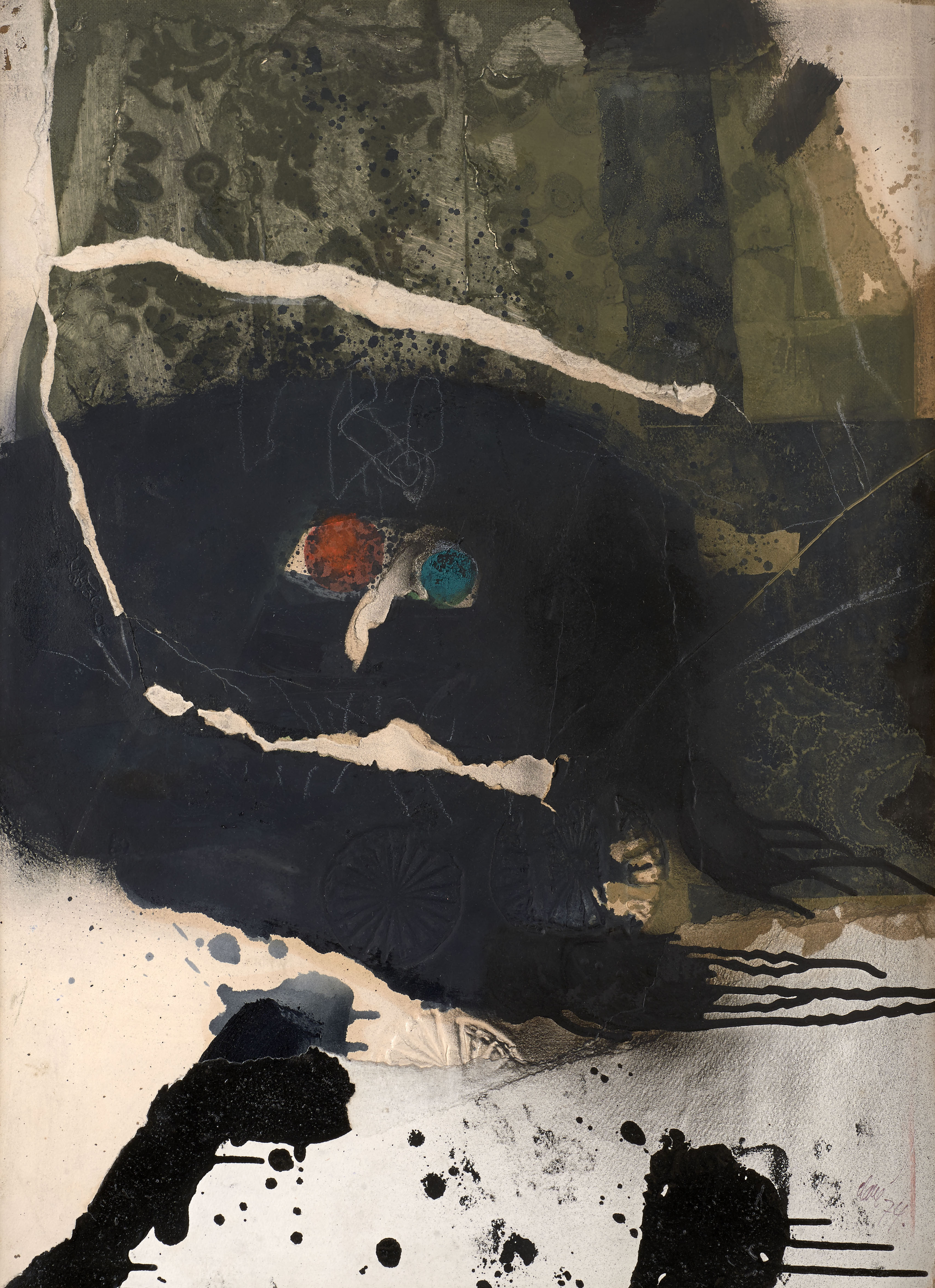In Clavé’s work, the figuration of the mid-1970s abstracts itself from all constraints, the composition risks imbalance, the technique and the material play with the artistic codes that were in force at the time as much as with any attempt at seduction. The face is reduced to the essential; it is not even accompanied by any of the attributes (a warrior’s spear or shield) that Clavé usually gave his characters. The figure fills the composition and yet is diluted within it, as if carried away by a lateral movement. The work is obviously humorous.
It is impossible to know if the character is smiling or bearing a gigantic scar. The face is entirely black, with technicolor eyes that emerge from it, and is probably a mask! Clavé’s sense of humor is also to be found in the technique: papers that are engraved, torn, glued, stained and even splattered. Clavé voluntarily moves away from “beautiful painting” and the classicism of oil on canvas. Here there are no preparatory drawings or varnish, he returns to his work as an engraver, using the technique of embossing to create a work of incredible freedom.
Clavé first used embossed signs in 1968 in an etching titled Beau-Fixe. These embossed elements have a family history: in the 1960s, during a visit to his cousin Josep Clavé in Barcelona, Clavé noticed some small round metal plates that were meant as molds for making cakes but neither Josep nor his wife knew how to use them. Seeing how interested he was in these objects, Josep gave them to his cousin. Clavé never made any cakes with them either, but thanks to these metal discs he enriched his personal iconographic repertoire and with them created a world of paintings, engravings and sculptures. Signs, stars, arrows were now on all the fronts, in every medium, symbols of a plastic maturity freed from the problems of the support. Clavé creates a new language with the polysemic vocabulary of signs, which are always, in fact, traces of something transcending into autonomy.
As for collage, Clavé began using this technique from the mid 1930s in his early career as a poster artist in Barcelona. He returned to collage again, using it as an assembling technique in his printed works from 1958 on with Roi. This theme, followed by that of the warriors, was developed as much in engraving as in painting and sculpture. This ebb and flow between different media enriched and unified his style. Œil vert œil rouge, created in 1974, is in a way a gently mocking heir to the warriors who had brought Clavé fame just a few years earlier.

